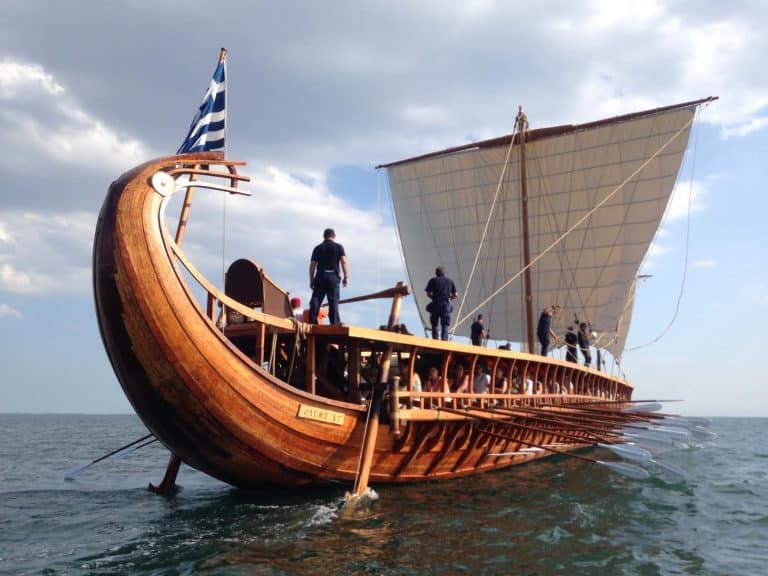

The Olympias, a meticulously reconstructed ancient Athenian trireme, stands as a testament to both historical scholarship and modern naval engineering.
More than three decades after her launch, this full-scale replica continues to be a vital tool for understanding the sophisticated warships that once dominated the Mediterranean.
Built between 1985 and 1987 in Piraeus, the Olympias project was a groundbreaking collaboration. Naval architect John Coates, historian John Morrison, and classics teacher Charles Willink spearheaded the ambitious endeavor, drawing on centuries of archaeological evidence, literature, and artistic depictions.
Funded by the Hellenic Navy and private donations, the vessel quickly became a unique entity, even being commissioned into the Hellenic Navy – a rare distinction for a reconstruction.
Measuring approximately 37 meters (121 feet) long with a beam of just under 6 meters (20 feet), the Olympias is a marvel of ancient design. Her primary propulsion comes from 170 oarsmen arranged in three distinct banks: 62 thranitai (upper), 54 zygitai (middle), and 54 thalamitai (lower).
While she also sports a square-rigged mainsail and a boat-sail, it’s the sheer power of human propulsion that defined her ancient counterparts.
A striking feature is the 200 kg bronze bow ram, a precise copy of an original found in the Archaeological Museum of Piraeus. This formidable weapon underscores the primary offensive tactic of ancient triremes: devastating ramming attacks.
Early sea trials in 1987, 1990, 1992, and 1994 yielded remarkable results. With a full complement of volunteer oarsmen and oarswomen, the Olympias achieved speeds of 9 knots (17 km/h) and displayed astonishing maneuverability. She proved capable of a 180-degree turn in under a minute, within an arc of just two and a half ship-lengths.
These trials provided crucial validation for historical accounts, such as those by Thucydides, concerning the incredible capabilities of ancient triremes. While the reconstruction didn’t quite reach the estimated 16-knot ramming speeds attributed to ancient vessels (possibly due to being slightly overweight), her performance solidified understanding of their tactical prowess.
The Olympias is far more than just a historical curiosity; she represents a living laboratory for experimental archaeology. Her construction and operation have definitively answered long-standing scholarly debates, particularly regarding the feasibility of the three-tiered oar arrangement.
Today, the Olympias holds a prominent place in the Naval Tradition Park in Palaio Faliro, Athens, where she remains a public exhibit. Maintained by the Hellenic Navy, she occasionally participates in maritime events, such as the “Sea Days” celebrations in Piraeus, and notably carried the Olympic flame during the 2004 Athens Games.
The legacy of the Olympias and the pioneering work of the Trireme Trust, which spearheaded the project, continues to inspire. Though the Trust concluded its operations in 2018, its meticulously documented findings are preserved at Wolfson College, Cambridge, ensuring that the secrets of the ancient trireme continue to be unraveled for generations to come.
Greek Reporter and over 100 paying guests visited the famous vessel back in 2018. Here is the report:
